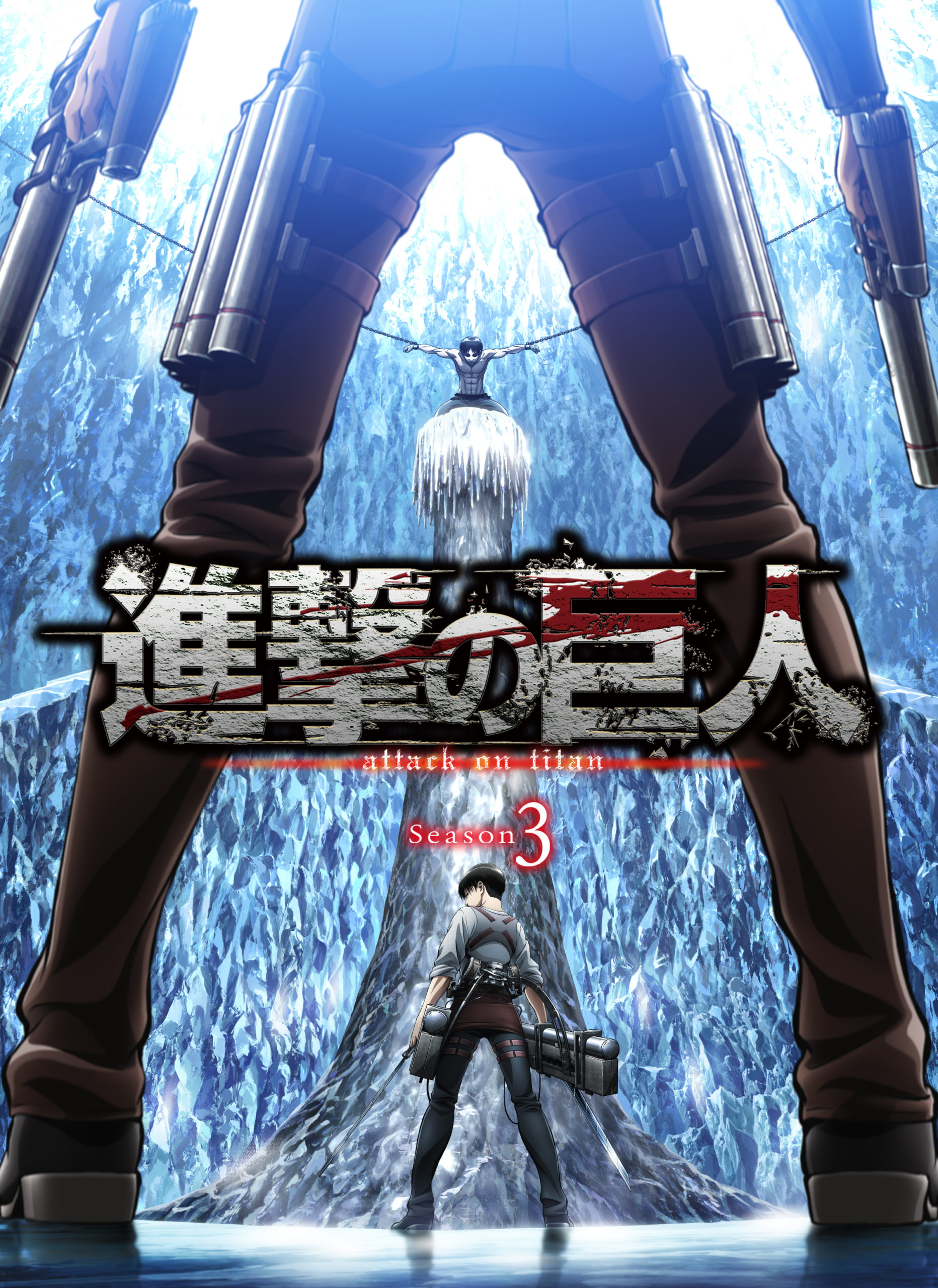
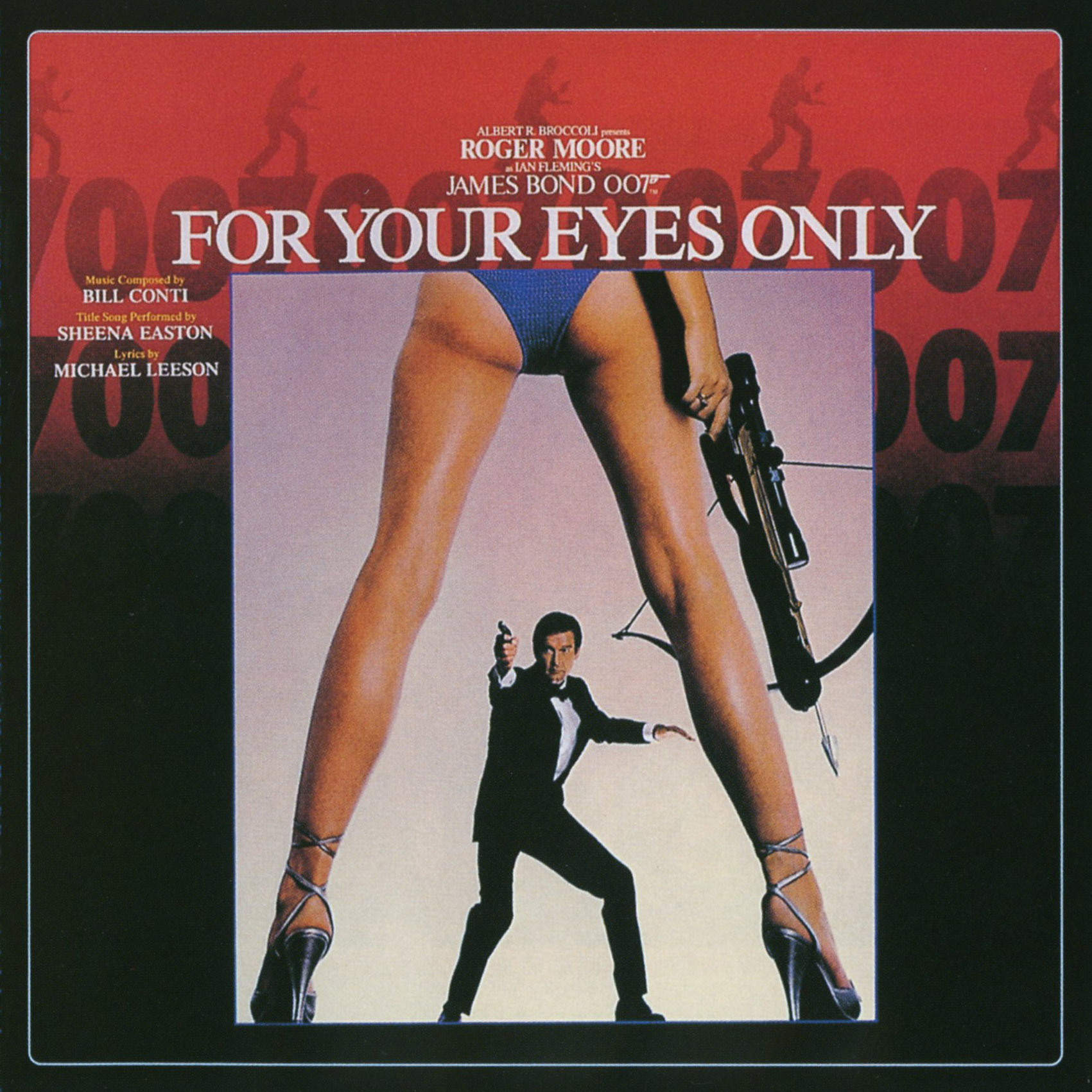
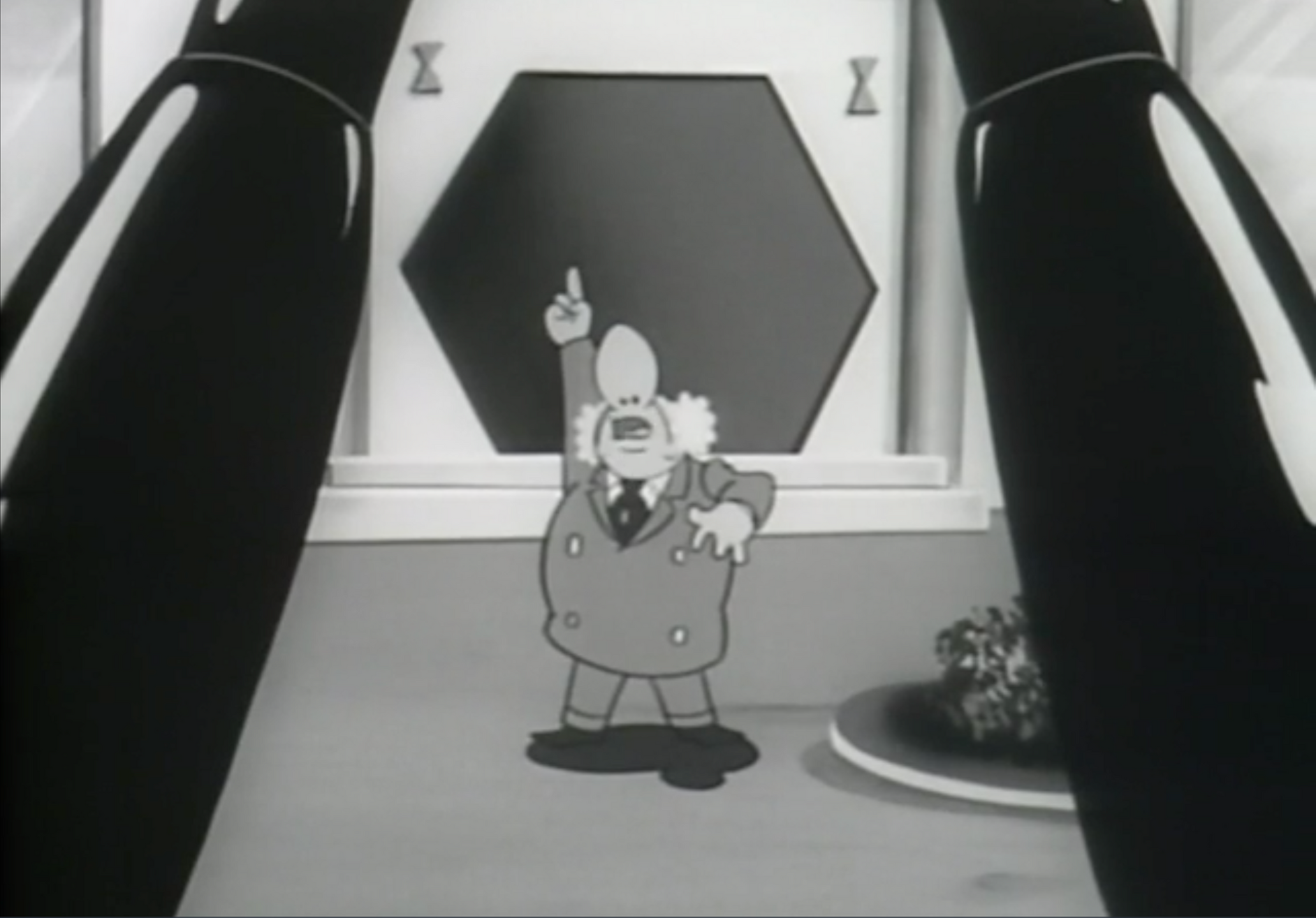
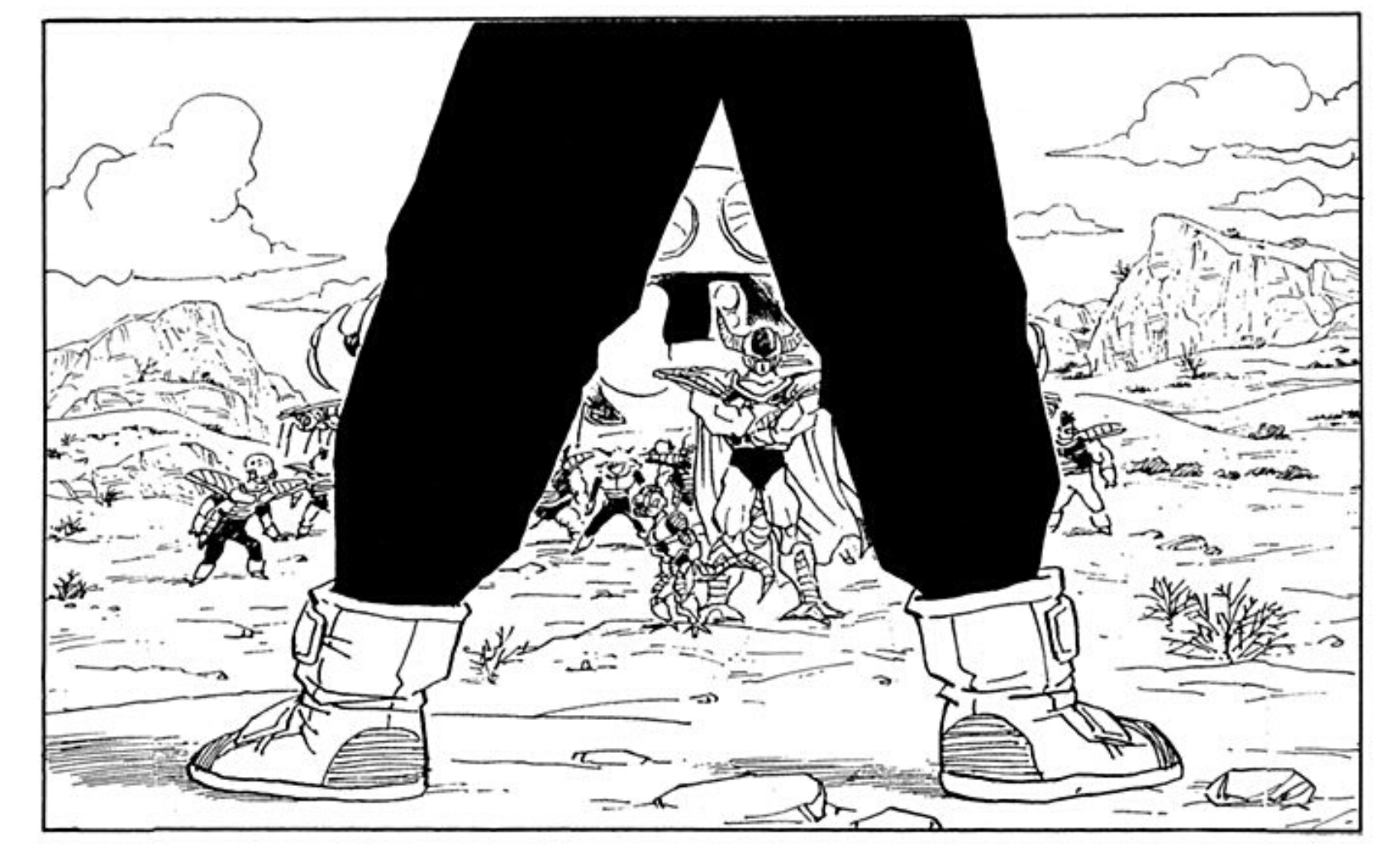
Animations are now popular with adults as well as children. There are always new things to discover with each viewing. Have you come across the composition where the character in the foreground is facing backwards and shown from the waist down with another character seen in the background? In 2008, Steven Heller, a well-known art director and design critic, claimed this framing was “the most frequently used trope ever.” From a low position and low angle, the legs of a person standing with feet shoulder width apart resemble the letter ‘A’, hence the term “A-frame.”
A commonly seen A-frame is originally from a certain spy movie.
Special effects geeks know this shot as the “Yajima angle.” Nobuo Yajima used this shot often with his special effects in shows such as “Ultraman Taro” and “Secret Sentai Goranger.” Since then, this shot has become more prevalent across various works, but this A-frame visual was originally used in the film “007: For Your Eyes Only”(1981).
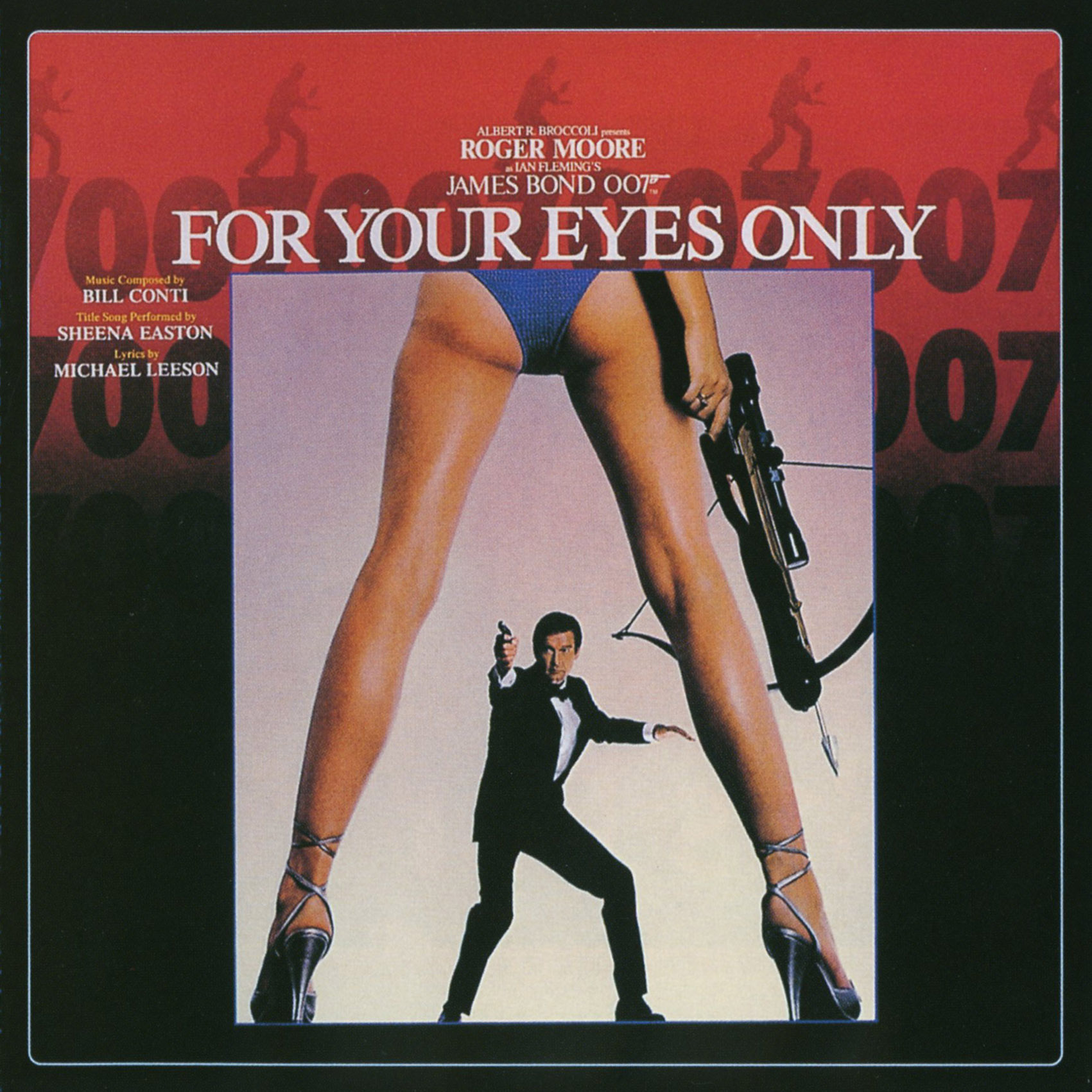
©Universal Music
A dashing James Bond, posing with a gun is seen between the legs of a woman in a sexy high leg swimsuit. This simple yet impactful image really draws the eyes to it. As a result, many works borrowing this composition have come and gone (a plethora of samples can be found if you search for them).
As I mentioned earlier, I often see examples of this angle in the popular anime series, but there are not many examples in teaser visuals or copyright illustrations. While this composition is effective in symbolically showing relationships, it makes the character look compact. However, there are examples of this effect being pulled off successfully.
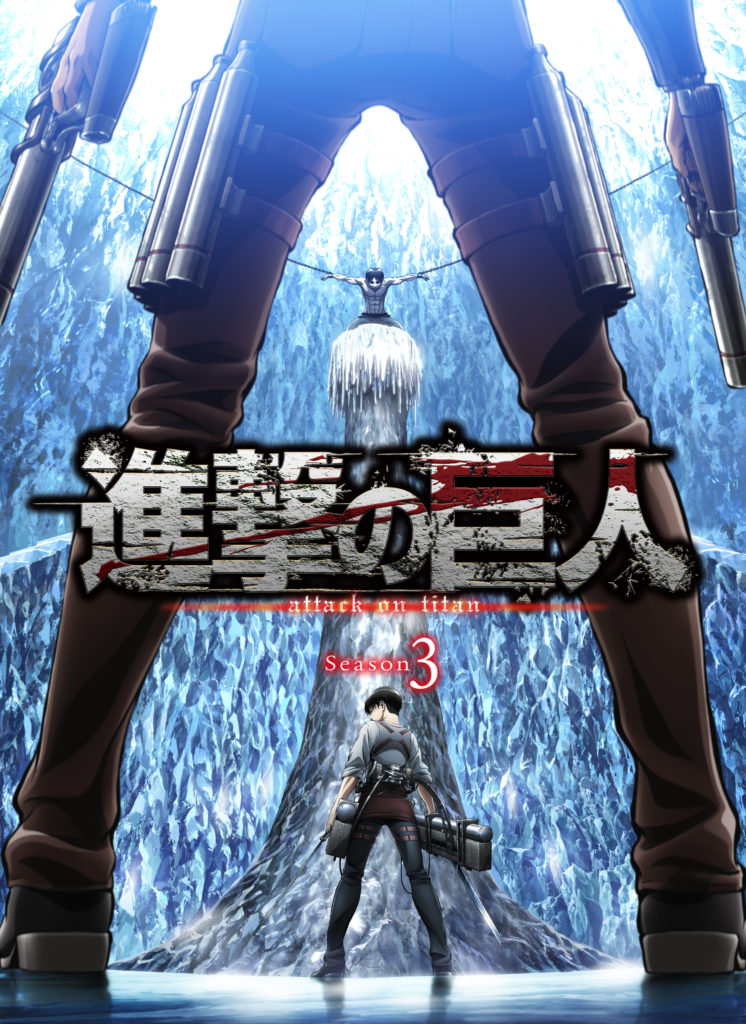
©Hajime Isayama, Kodansha / “Attack on Titan” Production Committee
What situation is formed by adopting a bold perspective that shows the relationship between each character? The superb visual admasses interest. But I was about what would happen if it were used and examined in a piece of art.
There are many famous pieces, examples are “City Hunter” (opening) (1987), “The Melancholy of Haruhi Suzumiya” episode 25 (2006),“Pokémon Black & White Series” episode 33 (2011), “Is It Wrong to Try to Pick up Girls in a Dungeon?” Episode 2 (2015), etc. There would be no end to a list if you were to start writing. However, the angle is often used in sexy situations with a female character in the foreground. This might be natural since it was first used in “007.” By the way, if you look for the oldest example of TV anime, you will find Japan’s first domestic robot anime as the first fully-fledged 30-minute TV animation in Japan.
The first person to use this in domestic TV anime was the “god of manga”.
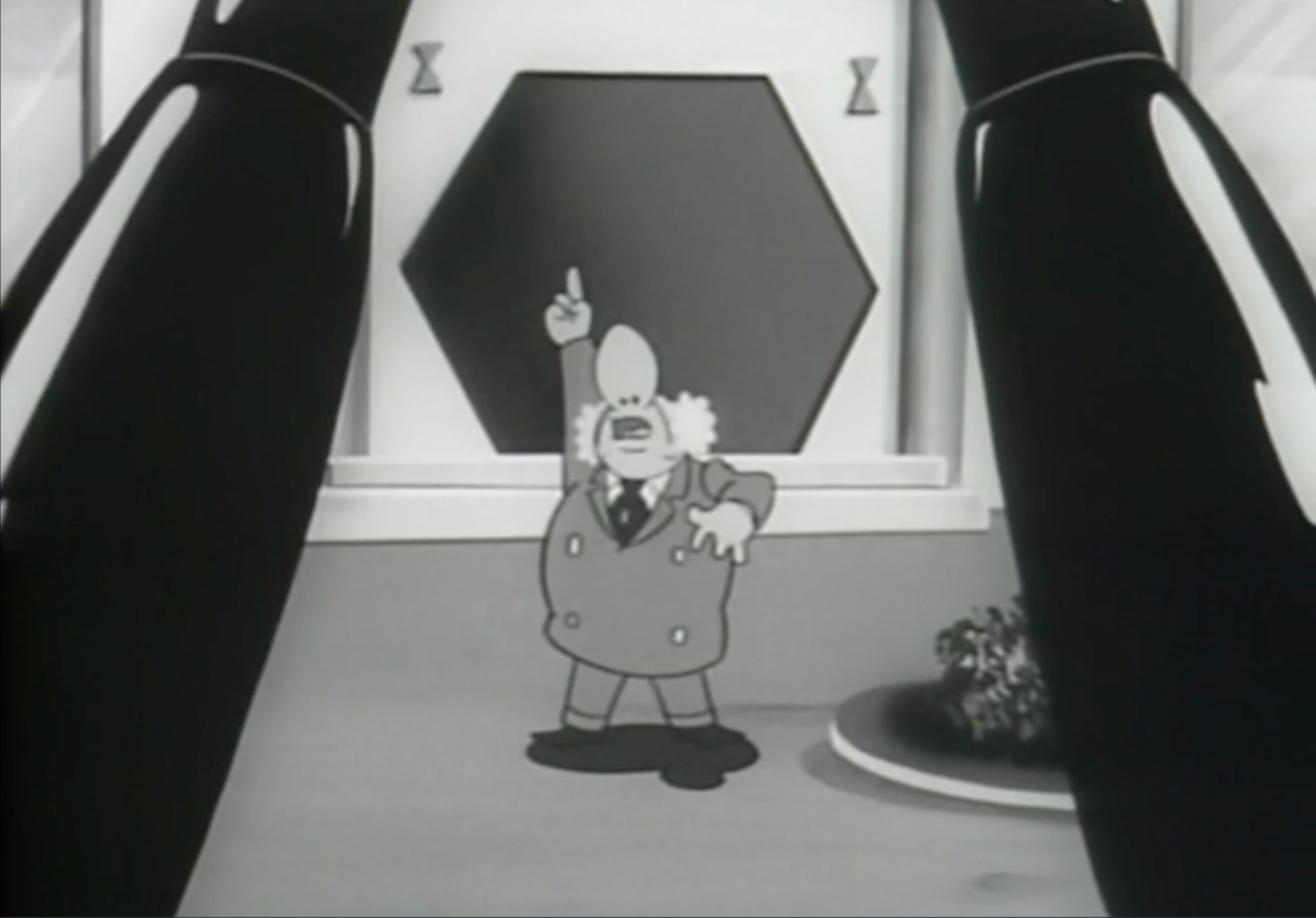
©TEZUKA PRODUCTIONS
As you may know, there is one scene in “The Greatest Robot” ever, one of the best episodes of “Astro Boy” by the god of manga. Standing at the feet of the robot, Prootu, is Dr. Ochanomizu, the guardian of the main character, Atom. The direction of the screaming doctor’s face shows how he is confronting a formidable existence. This A frame image is seen in both the anime and the original manga.
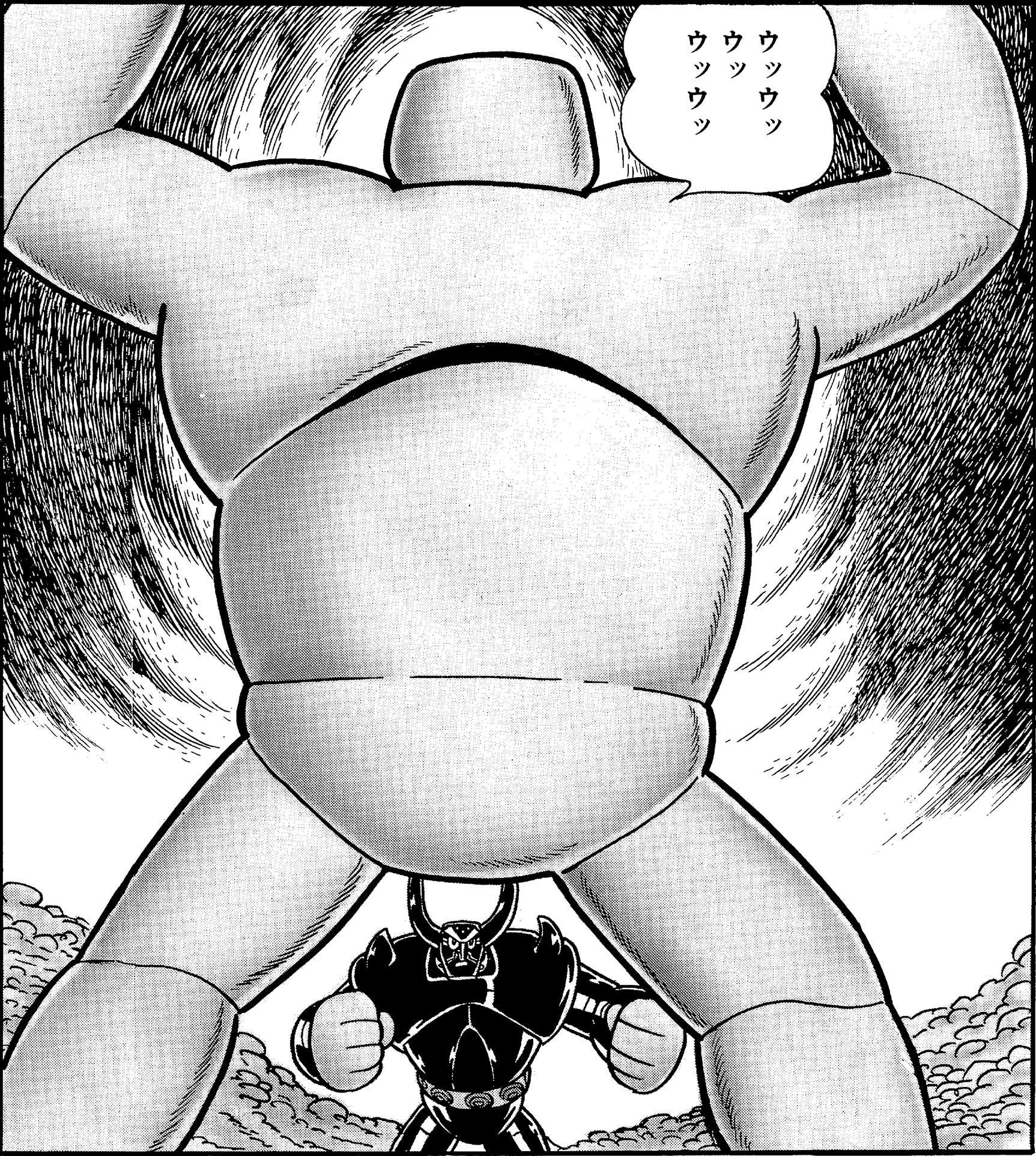
©TEZUKA PRODUCTIONS
Osamu Tezuka left a big mark on the Japanese manga world. He influenced other famous artists to use this angle in their work.
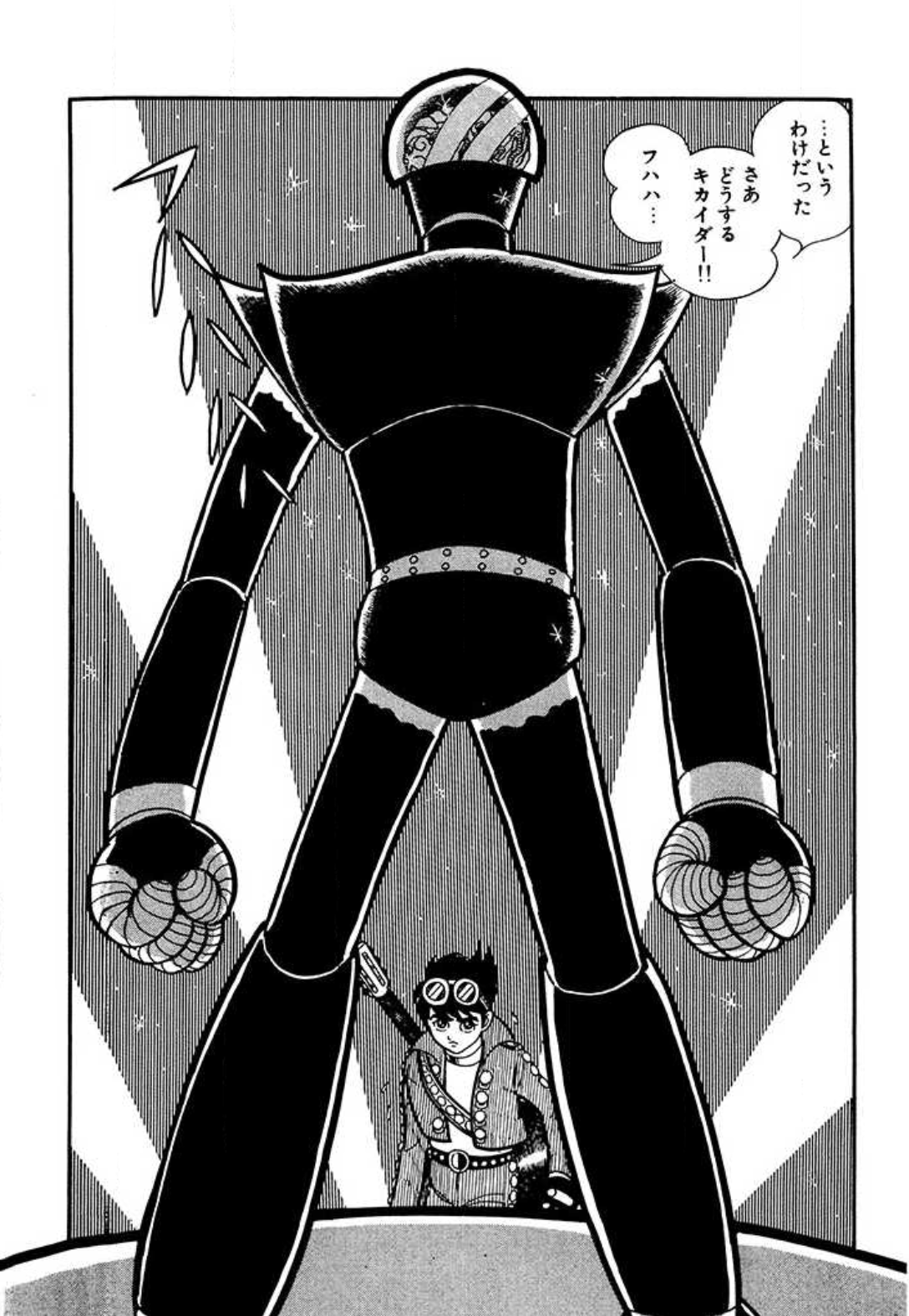
©Ishimori Pro
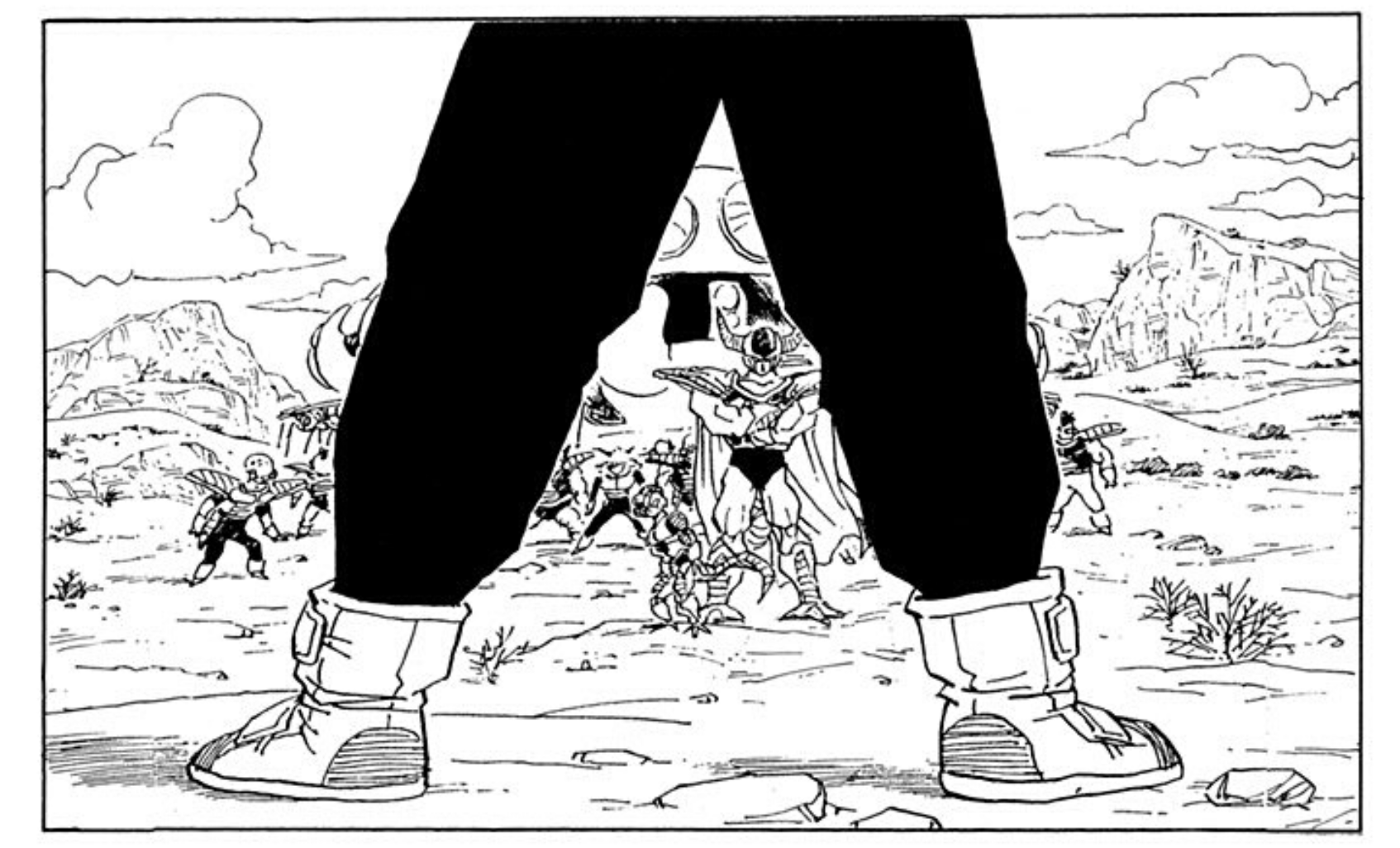
©BIRD STUDIO/Shueisha
As you can see, it is used to express a sense of urgency in big name masterpieces from overseas. Basically, the main character is in the back, with a strong adversary in the foreground. The protagonist’s expression can be clearly seen. This traditional cartoon style has been passed down from generation to generation from Osamu Tezuka, Shotaro Ishimori (now Shotaro Ishinomori), to Akira Toriyama.
The popularity of Western theatre has spread the “A-frame.”
How about overseas? Comic culture developed in the US before Japan, and the A-frame appeared in the 1950s. Here it is from the same time as “Astro Boy. ”
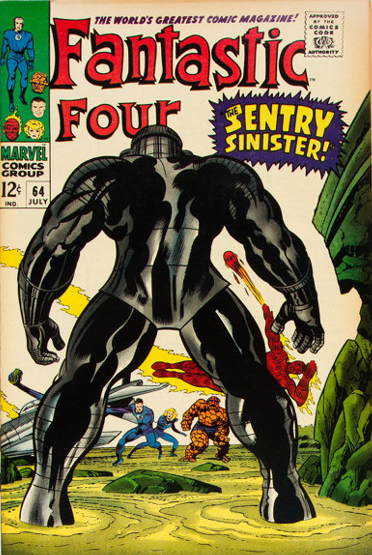
©︎MARVEL COMICS
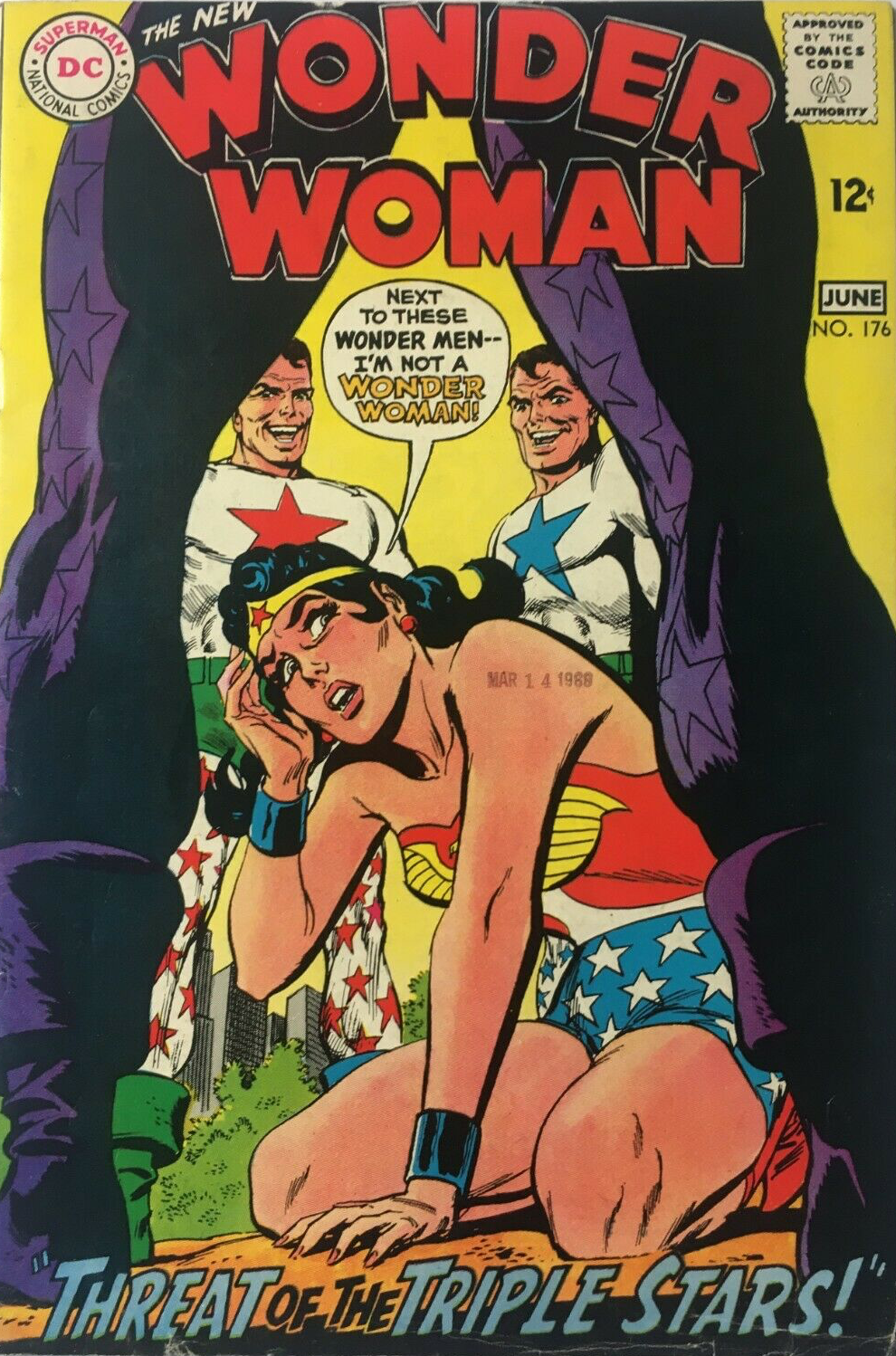
© DC COMICS
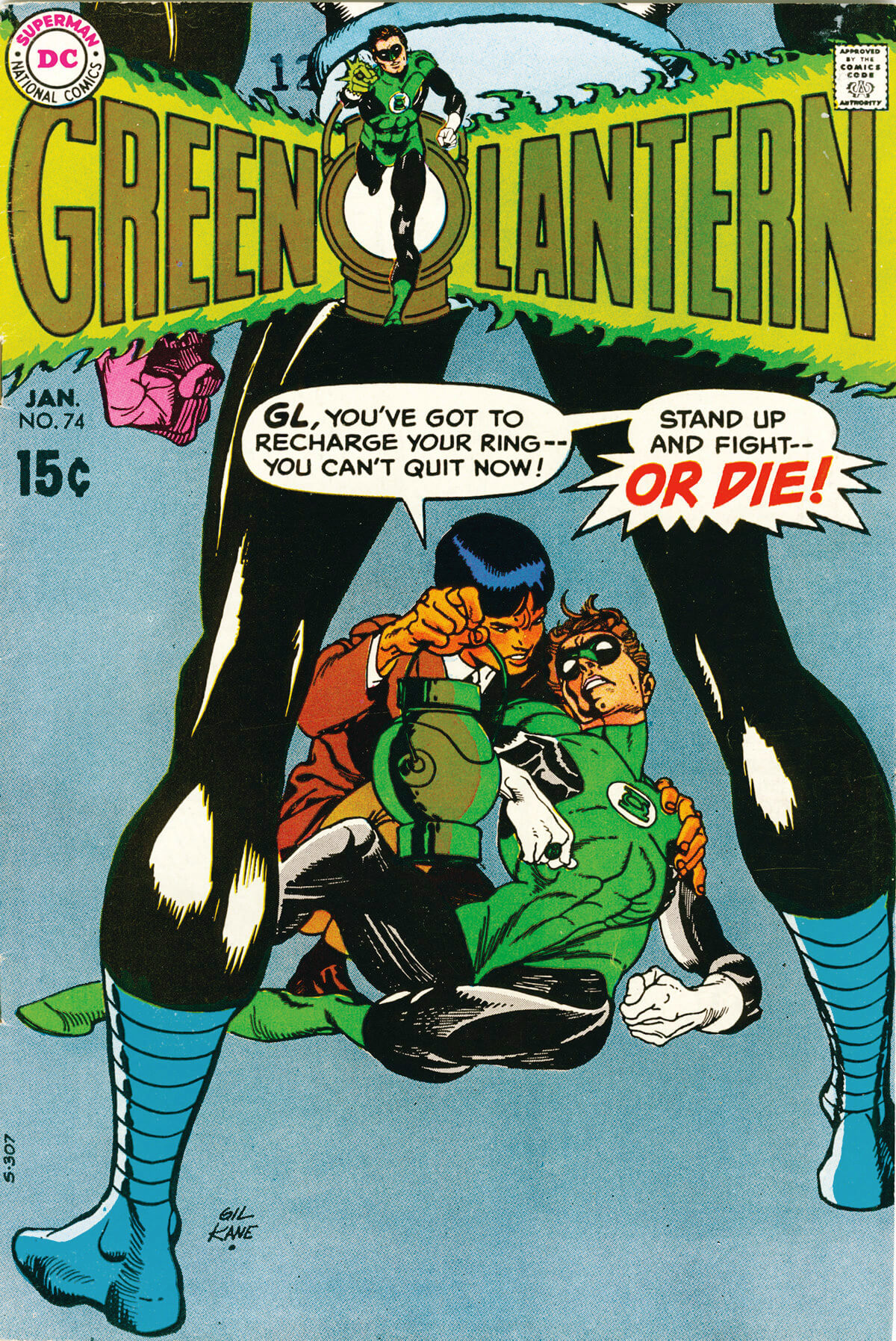
© DC COMICS
All of these works were published in the late 1960s, but the use of A-frames on the cover of American comic at the time were father nuanced, such as the “image of a hero with a burned hand from standing too close to a powerful enemy character” in Japan. The changing age can be felt in that the image is different from the modern examples mentioned above. Finally, let’s take a look at pulp novels (absurd, highly entertaining publications printed on low-quality paper called Pulp Magazines) published in the pre-“Astro Boy” era.

©︎Lion Library
As you can see from this illustration, the A-frame still suggests the image of a cowboy duel. As mentioned earlier, this framing became a staple, at least in the 1960s. Perhaps due to the vast number of western films and TV dramas produced at the time, A-frames were adopted to highlight the dynamic relationship between characters and created a sense of urgency. American artists who watched them, as well as famous Japanese manga artists, were sufficiently inspired to adopt it into their works. Those effects have continued to this day, and this impactful composition has unknowingly been burned into our minds. Animations that can use this single production in novel ways are interesting.
※This article is a re-editing of an opinion piece and has been cited with permission by Mr. Ohsajiya.
Edit Tommy

